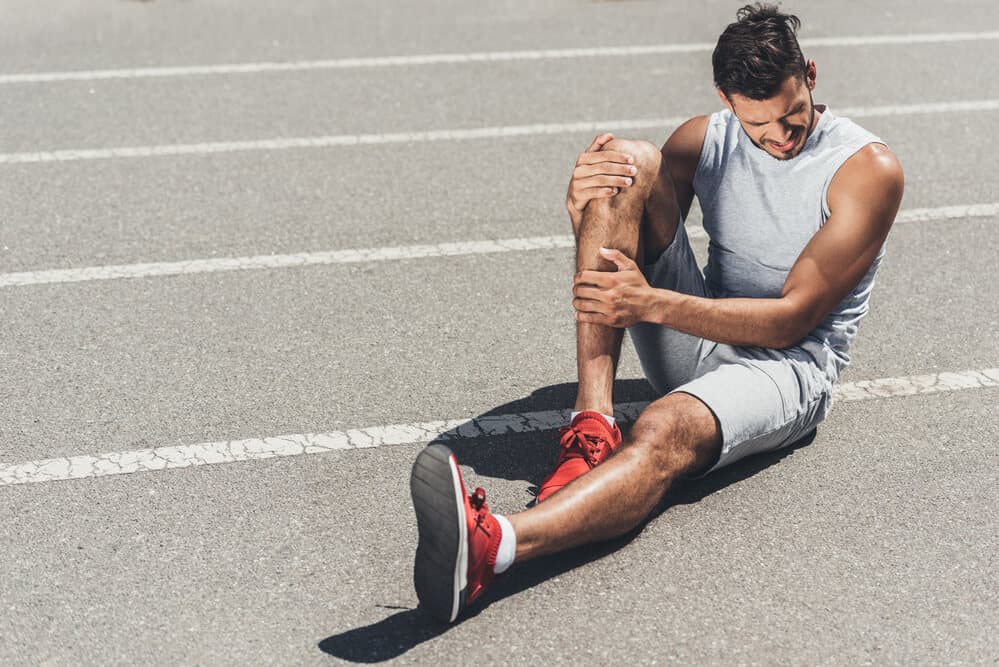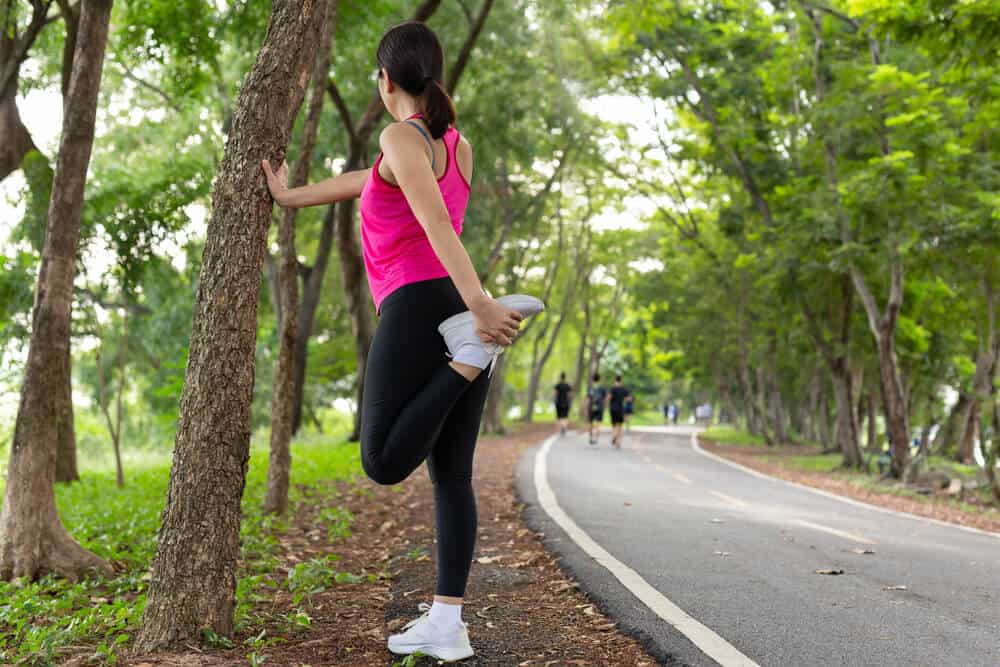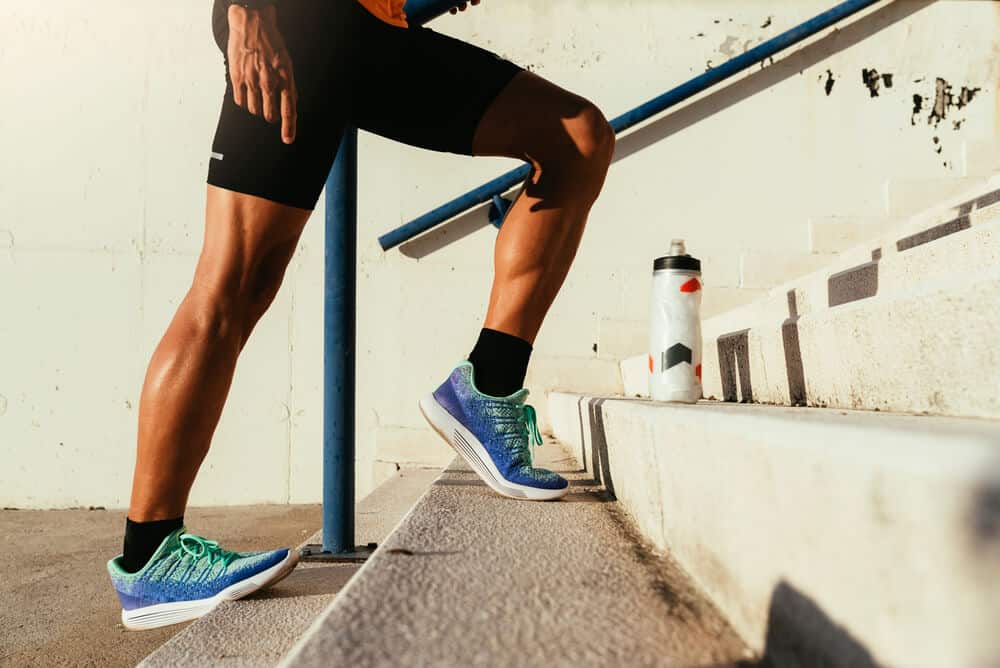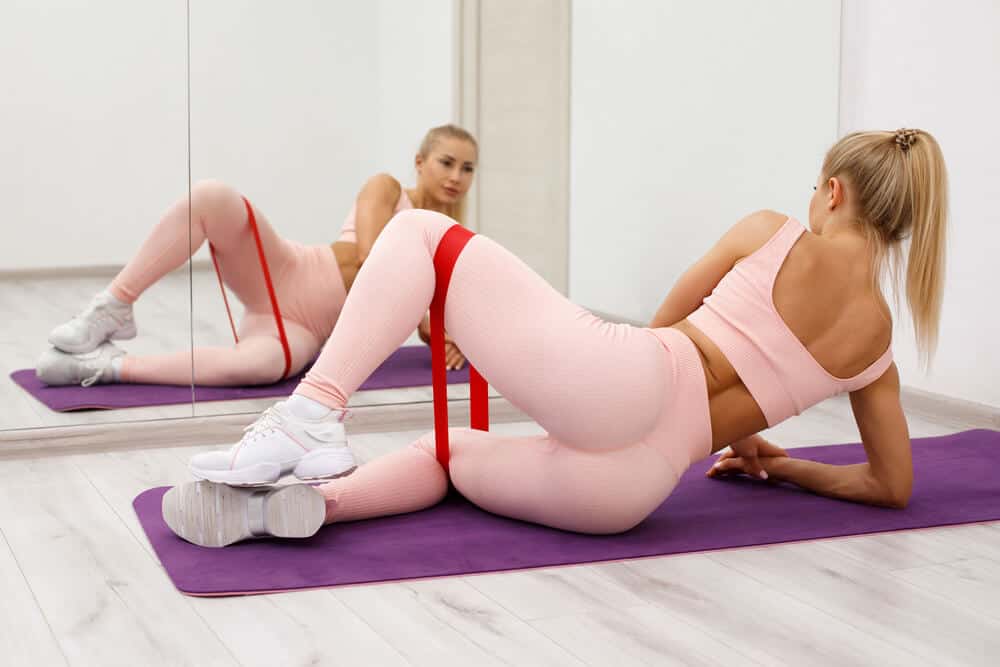Running is a high-impact sport. It puts a lot of stress on weight-bearing joints, which include the hips, knees, and ankles. For this reason, we’ve listed some of the best warm-up knee exercises for runners to prevent or at least reduce such injuries.
The exercises below are proven to be effective in treating and preventing Runner’s Knee, as well as a whole load of other knee injuries.
Note that these exercises aren’t suitable for individuals with severe knee issues, such as advanced Patellofemoral Pain Syndrome (PFPS), Chondromalacia Patella (CMP), and Patellar Tendonitis (Tendinopathy).
If you’re suffering from chronic knee pain, do consult a medical professional before attempting these exercises.
5 Common Knee Injuries Caused By Running

Running is a sport that keeps on giving. It’s inclusive, accessible, and, best of all, cheap. Plus, it comes with innumerable health benefits.
But as with most sports, running has its disadvantages.
For one, it causes joint problems and impacts injuries if not done right.
Repeated pounding takes its toll on your weight-bearing joints, which are particularly susceptible to injury.
It also causes muscle imbalances because it neglects the upper portion of the body.
These factors contribute to an array of knee injuries, such as:
1. Patellofemoral Pain Syndrome (PFPS)
Patellofemoral Pain Syndrome, also known as Runner’s Knee, is among the most common knee condition experienced by runners.
It’s associated with pain at the front of the knee, around the patella (kneecap). Pain can be anywhere from dull to sharp and excruciating.
PFPS is influenced by an array of factors, including anatomical or biomechanical abnormalities, muscular imbalance, and patellofemoral joint overload.
2. Patellar Tendonitis
Patellar Tendonitis, also known as Tendinopathy, occurs when the tendon that joins the patella to your tibia (shin bone) gradually wears down.
The tendon becomes painful and weak, and thus unable to cope with loading weight.
Caused by repeated stress on your patellar tendon, this overuse injury is common among runners who push themselves beyond what their body is capable of.
The stress results in repeated, minuscule tendon tears that the body is unable to repair.
3. Chondromalacia Patella (CMP)
Chondromalacia Patella is the softening and breakdown of cartilage on the underside of the kneecap, resulting in pain and inflammation.
It’s often a result of traumatic injury, overuse, or too much stress on the knee, but it’s also attributed to alignment problems and aging.
4. ACL and PCL Tear
The Anterior Cruciate Ligament (ACL) and the Posterior Cruciate Ligament (PCL) are responsible for stabilizing your knee joint.
They’re often torn during sports that involve frequent changes in direction and sudden stops, such as running, basketball, volleyball, tennis, and the like.
ACL and PCL tears are extremely painful. As soon as it occurs, you’ll instantly feel intense pain around the knee area. You might also hear a distinct popping noise when it happens.
5. Knee Stress Fracture
Knee Stress Fracture is a thin fracture that occurs in the tibia due to excess overuse or stress, which can accumulate from activities such as jumping and running too quickly.
Multiple factors contribute to Knee Stress Fracture, including increased physical stress, running on unfamiliar surfaces (i.e., on a hard path rather than grass), and improper running shoes.
7 Best Knee Exercises for Runners to Prevent Knee Injuries
By strengthening your ankles, knees, hips, and quadriceps (large muscle at the front of the thigh, you can effectively prevent and even treat knee injuries.
Doing so will also increase leg flexibility and decrease muscle tightness.
Before we proceed, note that running in and of itself isn’t bad for your knees. In fact, studies show that runners have lower rates of knee osteoarthritis than non-runners.
However, running in poor form and without proper warm-up can seriously damage your knees.
There’s a reason why the most common knee injury, the Patellofemoral Pain Syndrome, is sometimes called the “Runner’s Knee.” It’s caused by muscle overuse, stress, and improper form.
These exercises are targeted towards frequent runners. For best results, execute these exercises daily for three to six weeks.
You shouldn’t feel any pain when doing these exercises; if you do, consult a professional to get your knees checked out.
Shallow Standing Knee Bends
This exercise builds strength in your knees and upper thigh muscles. It’s targeted towards runners with little to no knee pain, with no locking or clicking knees.
- With a chair in front of you, stand in an upright position.
- Place one of your hands on the chair for support.
- Position your feet about a shoulder-width apart.
- Bend your knees as if sitting on an invisible chair, making sure they’re pointed in the same direction as your toes.
- Tense the muscles above your knees and buttocks as you come up.
- Repeat 8 to 12 times.
TIP: If you can’t hold your body weight, stand with your back on the wall and slowly slide down, using the wall as support.
You can also place an exercise ball between the wall and your back for smoother movement.
Standing Quad Stretch
When done properly, this quad stretching exercise activates the quad muscles, increases long-term flexibility, and relieves muscle soreness, all of which are greatly beneficial for runners.
Here’s how to do it:
- While standing upright, reach behind your body and grab your left foot with your left hand, bending your knee in the process.
- Bring your left heel up to your glutes, just above your buttocks.
- Keep the knee closed for about 15 seconds, then switch to the right leg.
- Repeat 2 to 3 times on each leg.
TIP: To avoid toppling over, place your opposite hand on a wall or on a friend’s shoulder while doing these stretches.
Single Leg Lifts
Leg lifts strengthen your calf muscles, hamstrings, and glutes.
Strengthening these muscles helps alleviate pressure in the knees during everyday activities such as walking, jogging, running, and jumping.
Leg lifts are often dubbed the “lazy person’s exercise” because they can be done even while lying in bed. It’s convenient and time-saving, but at the same time effective.
You can’t go wrong with this one.
- Lie on your back and rest your hands on your sides.
- Bend one knee at a 90-degree angle.
- Tighten up your thigh muscles and lift the unbent leg until it’s at a 45-degree angle.
- Hold this angle for about 2 seconds before slowly lowering the lifted leg on the floor.
- Repeat this up-and-down movement on the lifted leg 20 times. Then, repeat on the other leg for the same amount of time.
- Perform 2 to 3 sets, totaling 60 lifts per leg.
Calf Stretch

As the name suggests, calf stretches activate the calf muscles. They increase blood flow to the area, preventing muscle stiffness and calf pain.
- Place the palms of your hands flat on the wall at eye level.
- Position one of your legs back with your knee straight and your heel flat on the floor.
- Move the other leg forward, slowly bending your knee.
- As you bend forward, turn the unbent leg inward until you feel a stretch in your calf.
- Hold this position for 15 to 30 seconds, then switch positions and repeat with your other leg.
- Perform a total of 3 sets per leg.
Clamshell Exercise

The clamshell exercise is another low-effort knee exercise designed to strengthen the gluteus medius, bringing more stability and power to your hips.
- Lie on your side with your legs stacked atop each other and your knees bent.
- With your heels pressed against each, slowly open your top leg to form a “clam” shape.
- Hold this position for 2 seconds, then lower your leg.
- Repeat this open-and-close movement 15 times, then switch positions and do it to the other leg.
- Perform 2 or 3 sets, totaling 30-45 reps per leg.
Step Up
The step-up exercise targets the hamstrings, quadriceps, and gluteal muscles, making it an effective lower body conditioning exercise for runners prone to knee injuries.
- Place your right foot on a chair, a box, a bench, or a step.
- Step into the bench and bring your left foot up.
- Lift your left foot in the air for a second as your right leg straightens.
- Step down the bench, starting with your left leg first.
- Repeat 10 times, then switch position.
- Perform 2 to 3 sets, with 20-30 reps per leg.
Forward Lunge
The forward lunge stabilizes the muscles in your core and back, as well as the muscles in your inner thighs and gluteus maximus.
- Stand with your feet hip-width apart and slightly bent. Tuck your chin in as if holding an egg underneath.
- While maintaining an upright chest position, place your hands on the side of your hips and take a step forward.
- Bend your hips, knees, and ankles as you lower your hips towards the floor, just until the back of your knee is about an inch or two from the floor. At this point, both your legs should be at a 90-degree angle.
- Stay in this position for about 3 to 5 seconds, then use your glute and quad to push yourself back to your original position.
- Repeat on the other side.
- Perform 4 or 5 sets of lunges.
Final Thoughts On Knee Exercises for Runners
Running is a high-impact sport, so precautions must be taken to avoid injury. The knee exercises above are specifically catered to runners prone to knee injuries.
They’re particularly effective for treating and preventing the ever-dreaded Runner’s Knee.
For best results, perform these knee exercises and stretches before or after running.
If you feel intense pain at any point of the exercise, stop immediately and consult a medical professional to check the status of your knees.
